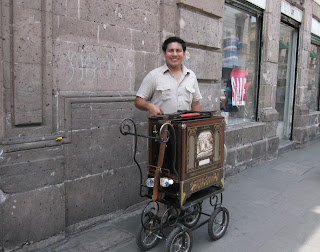It all started with a post I read in Saborearte Entusiasma, Carmen’s blog. She awakened my cravings for Indian food. After reading her post I went out for dinner with my husband to Bombay, a local Indian restaurant. We had the most delicious dish that made me want to come home and duplicate the recipe.
The dish was Malai Kofta. The waiter described it as vegetarian meatballs but I would say they were potato dumplings. They were soft on the inside and crispy on the outside. They were covered with a creamy sauce that was sweet and nutty with a little bit of heat. Umm, so good! I promptly wrote the name and the ingredients for the sauce that were listed on the menu; cinnamon, nutmeg, mild spices and malai or cream. Although I had no idea how I was going to do it, I, for sure, was going to try to duplicate this at home!
Remember my office? Yes, my office, the one with employees from all over the world? We have a girl from India who I knew was going to help me with this recipe. Yes, I know, I can get help from the internet… I'd rather ask my friend at work. I like going to the internet for many things, including recipes. But whenever possible and as my first choice, I like asking people for recipes. When I talk to people I learn much more than just the recipe. I learn about the person, their family, their country and how a certain recipe relates to whomever is sharing it with me. I find this fascinating!
 |
| Garam Masala Whole |
I asked Monica, my friend at work, about the mild spices and I told her the dish tasted like it had some nuts but the menu didn’t mention it. Yes, she told me, the sauce is made with tomatoes, onion and it has ground cashew which is what thickens the sauce. Besides the cinnamon and nutmeg, people use chili powder and other spices but she told me to use garam masala. Monica didn’t have a recipe because, as in many cultures, family recipes are not written, they are passed on from generation to generation by word of mouth. She was able to remember how Malai Kofta was made in her home back in India and she shared that with me, which made me very happy!
With Monica’s help and some research I did on the internet, I came up with a recipe for Malai Kofta which was very close to the one we had at the restaurant. I will be giving you the recipe but this is a very long process and it takes several steps, it took me all day! But I’m going to share it in several posts. Today I’m starting with recipes for three pastes; onion paste, tomato puree and cashew paste. I also have a recipe for paneer, an Indian cheese that is used in the making of koftas.
Onion Paste
1 cup chopped onion
1 bay leaf
2-3 cardamom pods
¾ cup water
In a shallow pan cook all the ingredients until the onion becomes translucent and the water evaporates. Let it cool and grind to a paste. Place in a jar and store in the refrigerator until ready to use.
Tomato Puree
3 medium tomatoes, peeled and cut in half
1 garlic clove
Water as needed
Salt and pepper to taste
In a shallow pan, place the tomatoes and garlic and cover with water. Cook until soft. Transfer only the tomatoes to a blender with salt and pepper to taste. Blend to a smooth puree. Place in a jar and store in the refrigerator until ready to use.
Cashew Paste
20 whole raw cashews
5 whole raw almonds
Milk as needed
Soak the nuts in hot water for several hours until they become soft and plump. I didn’t want to wait so I cooked them and let them boil for about 10 minutes. Transfer to a blender and grind to a paste. Add milk as needed to help the blender. The result should be a thick paste. Place in a jar and store in the refrigerator until ready to use.
Paneer
1 quart whole milk
3-4 tablespoon lemon juice
In a heavy bottomed pot, heat the milk over medium heat. When the milk starts boiling, remove from heat and stir in the lemon juice. Keep stirring until the solid curds separate from the watery whey. Allow the mixture to cool down for a few minutes and then strain through a kitchen towel draped over a bowl. Wrap the towel around itself in order to squeeze out liquid from the curds. Shape the paneer into a round and wrap tightly. You can shape your paneer into a rectangular block making it suitable for slicing and frying. My recipe does not require any specific shape so I just did a flat round. Place a heavy weight on top of the paneer to force out more moisture. I let my paneer sit under the weight for 15 minutes, after that, it was ready to use in my recipe - for more firm paneer, let it sit longer time. Remove from the towel and use in your favorite Indian recipe.
The three pastes can be used to season any dish and the paneer can be eaten as is or can be added to many recipes. In my next post I will show you how I used these.


















































